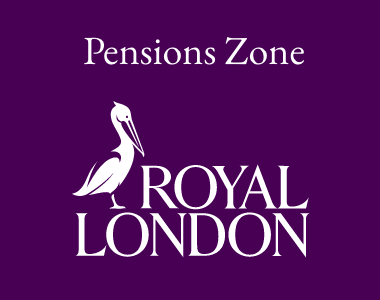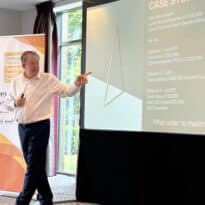Ken Scott, investment expert, Royal London, takes a deep dive into the new pension and IHT landscape alternative ways to manage IHT liability and concludes with three key aspects that paraplanners can know will remain constant.
The impact of inheritance tax changes on UK pensions
Changes announced by Chancellor Rachel Reeves in the Autumn Budget to bring pensions savings into the scope of inheritance tax (IHT) have had many advisers and their clients evaluating what the new rules will mean for their estate planning.
Despite becoming less attractive than they are today for wealth transfer, pensions should remain the best option for long-term saving and flexible retirement income if the new rules come into effect as proposed.
How does IHT work and what’s changing?
Under the current tax rules, savings in defined contribution pensions are normally exempt from IHT – provided death benefits are paid at the trustees’ discretion. If the pension holder dies before the age of 75, the pension pot can usually be passed on to beneficiaries free of IHT and the beneficiaries can withdraw money from that pension without incurring income tax. If the pension holder dies on or after age 75, there is still no IHT liability, but the beneficiaries will pay income tax on withdrawals at their own marginal income tax rate.
The proposed new rules would mean that defined contribution pensions are no longer out of scope of IHT, meaning any residual value in a pension on death would be considered as part of the estate when calculating IHT liability. There will remain a spouse’s exemption, meaning that if assets are inherited by a spouse – including pension wealth – there is no IHT liability on those assets. The rules around income tax payable by beneficiaries before and after 75 also remain.
Are pensions still attractive?
The proposed changes mean that pensions as a vehicle for wealth transfer between generations would become less attractive than they are today. However, for the primary purpose of providing retirement income, pensions remain the most tax-efficient product available to UK savers. There are a few reasons why this is the case.
Pensions contributions are exempt from income tax, growth is exempt from income tax and capital gains tax, and income tax is only paid at the point of withdrawal.
Since the great majority of savers will be receiving a lower income in retirement from their pension than they do from their employer during working life, this deferral normally serves to spread their income over time and reduce the amount that is taxed at higher marginal rates.
Pensions also benefit from a portion of the savings being able to be withdrawn tax free. This is currently 25% of the total pot, up to a value of £268,275.
While a more modest benefit, investments in some markets outside the UK can be subject to a withholding tax on dividend income. While pensions and ISAs both benefit from not being taxed on investment returns, only investments via a pension are exempt from this double taxation and can therefore access more efficient returns.
For those seeking to make larger savings, pensions will usually have a higher maximum annual contribution limit than ISAs, which are the next most tax-efficient savings vehicle. This may not always be the case. For example, for high-earning savers who are subject to a tapered annual allowance, or for individuals who have started to withdraw from their pension and are now subject to the Money Purchase Annual Allowance. Pensions also permit carry forward of unused allowances from previous tax years that ISA limits do not.
From April 2027 pensions will be subject to IHT, but this is already the case for all other savings vehicles such as ISAs and GIAs. If these proposals were to be implemented, pensions may become less attractive than they are today, but they would remain more attractive than any alternative.
This means that tax-efficient strategies that use pensions – for example, workers tipping ISA savings into a pension once they are over 55 (when the flexible access that ISAs offer is also available in pensions) – will remain an attractive option for savers. Concerns have been raised about double taxation of residual pension savings (IHT and the beneficiary’s marginal income tax) if someone dies over the age of 75. The government’s response to the consultation should provide clarity here and could change the most tax efficient order in which to take income across different wrappers.
Are there alternative ways to manage IHT liability?
Pensions were not originally intended for generational wealth transfer, and these proposed changes will revert pension wealth to how it was treated before Pension Freedoms in 2015. The proposed change will, however, mean that clients who don’t exhaust their defined contribution savings as income during their lifetime will have a larger estate subject to IHT when they die.
Advisers and their clients might therefore be considering what options are available to manage their potential exposure to IHT. With any option, it is critical that the intended client outcome is the primary driver for decision making; using solutions less aligned to meeting customers’ needs just because they have potential for marginal tax gains is unlikely to meet the expectations of Consumer Duty.
Embracing flexibility
Staying in drawdown means self-insuring longevity risk. This is where the concept of ‘sustainable income’ becomes important. Sustainable income is typically calculated by looking at a distribution of possible future economic scenarios and considering what level of income can be taken such that the risk of running out of money before death is aligned to a client’s risk appetite. There are often two layers of prudence built into these calculations:
- mitigating the probability of running out of money; and
- the expected lifetime time horizon – e.g. rather than projecting over an average life expectancy time horizon, this projection is done to an older age (e.g. 75th percentile or even 99).
For example, a calculation for a single person aged 65 with an average life expectancy of 20 years (to age 85) might consider the level of income that would give an 85% confidence level of lasting until they were 90. The calculation is different for joint-life planning, but the same principle of two layers of prudence applies.
Customers genuinely willing and able to flex their income over time can potentially reduce the prudence in this calculation, therefore taking more income throughout retirement and reducing the likely size of their residual estate. If not needed for their own spending, this income could also be used for gifting.
Gifting early
Many clients will have an ambition to leave a legacy to their children or other dependents. Where a client’s assets are such that their own income needs are comfortably sustainable, clients can consider gifting early. Individuals can gift up to £3,000 per year without being subject to IHT using the annual gift exemption. The small gift allowance means that you can gift as many small gifts of up to £250 per person per year if you haven’t used another allowance on the same person. Over this limit, gifts within the last seven years will need to be included in the IHT calculation on death. Whether there is tax to pay on the gift will depend on the total value of gifts made in that period and, where there is IHT due on gifts, taper relief may be available.
Gifting any amount through regular payments is also exempt from IHT, provided this is paid from surplus regular income after meeting usual living standards.
Care is required here in respect of the client’s marginal rate of income tax. If, to gift early after withdrawing pension income for their own needs, gifting withdrawals are at the higher rate of income tax, then the client will be paying 40% income tax at the point of gifting rather than 40% IHT at the point of death. At an individual client level, therefore, this does not change the net amount a client can pass on. However early gifting can be beneficial at family-level, as the receiver of the gift won’t pay income tax on the gift, whereas the beneficiary of the pension may do.
Investment choice
Investments held in the Alternative Investment Market (AIM) are currently exempt from IHT if they have been held for more than two years. This exemption is being halved – meaning IHT will be incurred on these assets at 20%. Clients with risk appetite aligned to these investments could consider holding a portion of their portfolio in this market.
Annuities
The primary driver for selecting an annuity over drawdown is whether or not a client wants to trade their longevity risk for security. The prudence required in sustainable income calculations means that annuities can offer higher levels of income than might be considered safe in drawdown. The trade-off for this higher income is giving up the possibility of a death benefit. With IHT making the death benefits in drawdown less attractive, clients may put more focus on maximising their lifestyle in retirement and look to annuities to deliver that higher income.
Again, if this results in more income that is needed to cover expenditure, residual regular income can be gifted exempt from IHT.
Protection
Where protection plans are held in trust, claims payouts are outside of IHT. Clients could use assets intended for legacy transfer to purchase a whole of life protection policy. Premiums could be funded from drawdown income, or this strategy could be combined with annuity purchase where the income from an annuity is aligned to cover the whole of life premiums. Joint-life second-death plans can be employed where it is the wealth of a couple rather than an individual being managed.
Property Wealth
Where a client’s estate is likely to exceed the IHT threshold, but they have relatively modest liquid assets, equity release could be used to gift from property wealth. From an IHT perspective, this gift will be subject to the same rules as if the client gifted from pension savings, but there will be offsetting impacts that may make one route more appealing than the other:
- income tax will be payable on pension withdrawals meaning that the same net gift would require a larger withdrawal from pension than property
- the interest rates on equity release are typically higher than savings interest rates and may compound faster than the growth in invested savings.
Advisers would need to carefully weigh up these factors based on the individual’s circumstances.
Business Owners optimising the value of their business vs. pension
Business owners will achieve attractive tax benefits from paying into a personal pension rather than distributing profits to themselves. Pensions contributions can offer savings on corporation tax, employer National Insurance and dividend tax.
In addition, agricultural and business property reliefs are to be reformed. These assets are currently exempt from IHT but, from April 2026, IHT will be charged at 20% on assets above a £1m threshold. For business owners with assets valued over this threshold, early gifting – of full or partial ownership – could help mitigate IHT.
Trusts
Trust-based solutions can give different degrees of IHT benefit but come with limitations on the access clients have to the assets placed in trust, should their circumstances change. Gift and loan trusts allow clients to cap their exposure to IHT whilst discounted gift trusts allow clients to benefit from an immediate reduction in their IHT liability.
Conclusion
Although the specific rules around IHT are expected to change, three key aspects will remain constant.
The tax system will continue to be complex. Different financial products have varied tax rules, rates, and allowances, making tax efficiency in estate planning a technical challenge.
Pensions will continue to be the most advantageous vehicle for retirement saving and providing flexible retirement income. For many retirees with modest savings, managing retirement funds within a pension will remain the optimal solution.
For clients fortunate enough to possess substantial retirement savings, there will still be opportunities to maximise efficiencies that, primarily, only financial advisers can help implement.





























